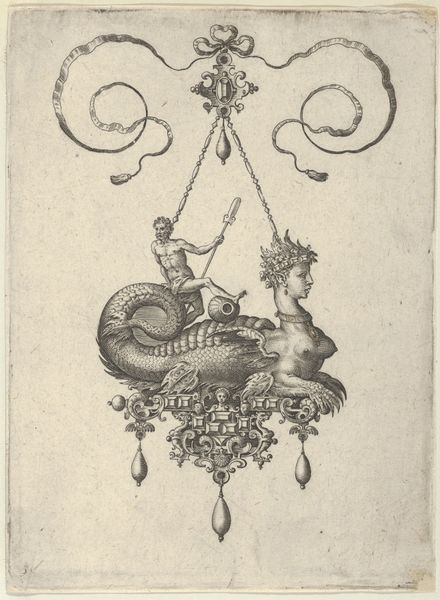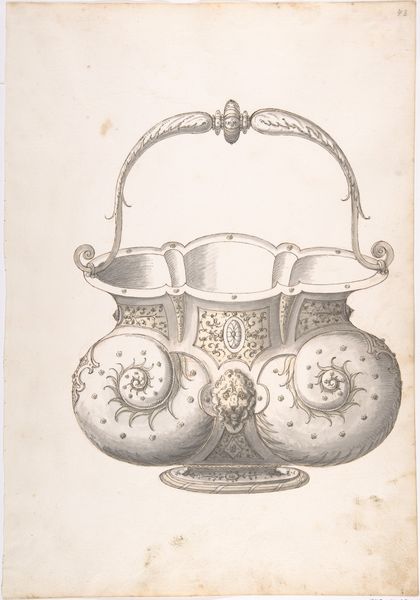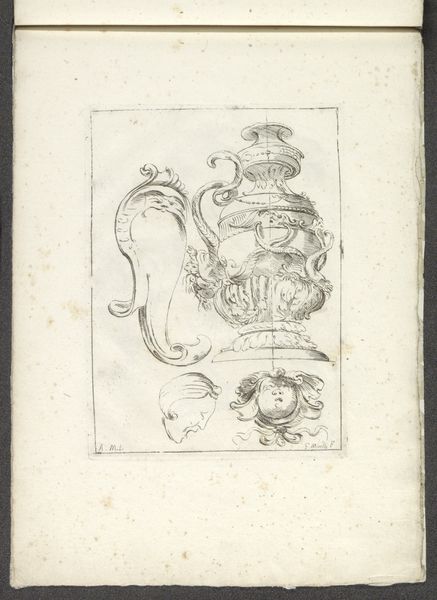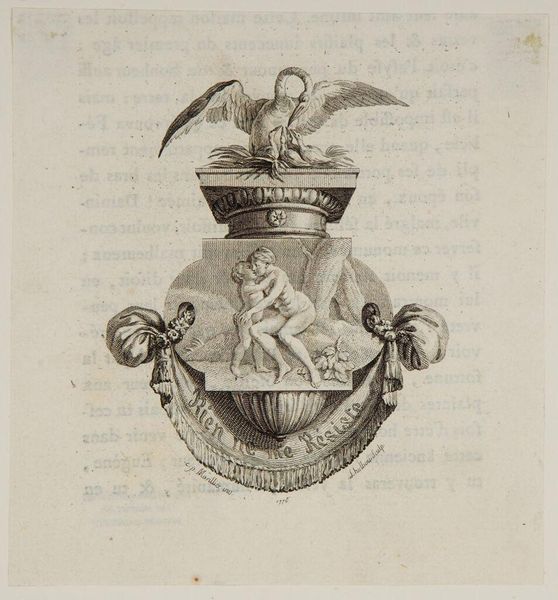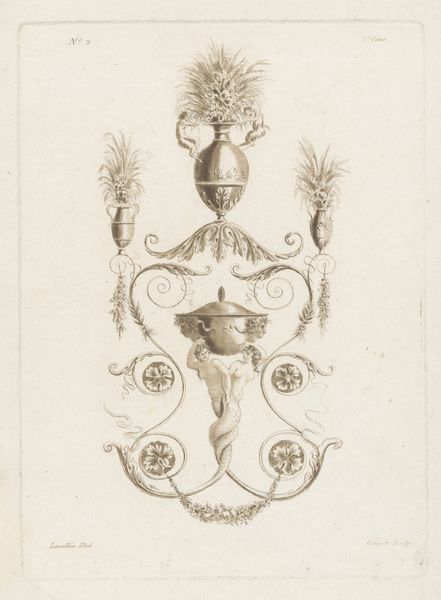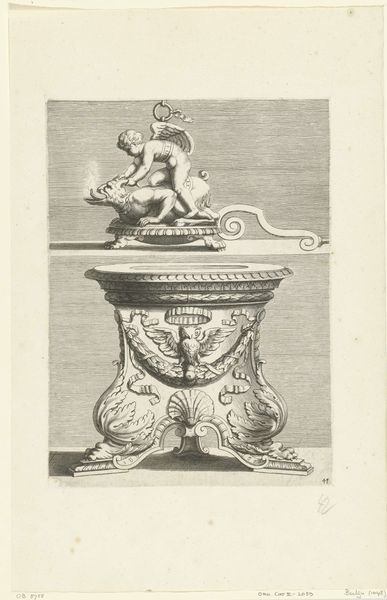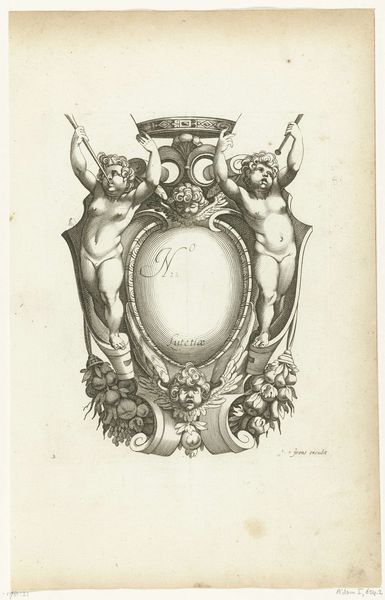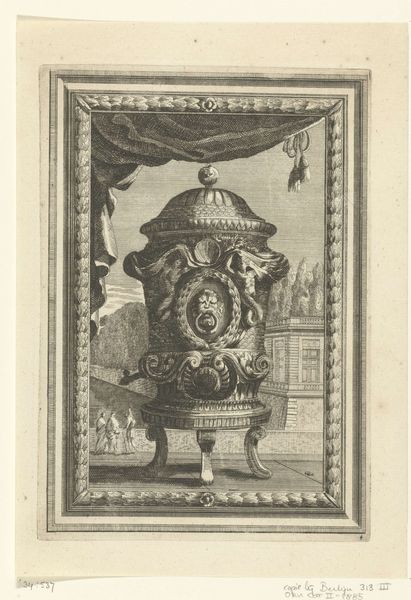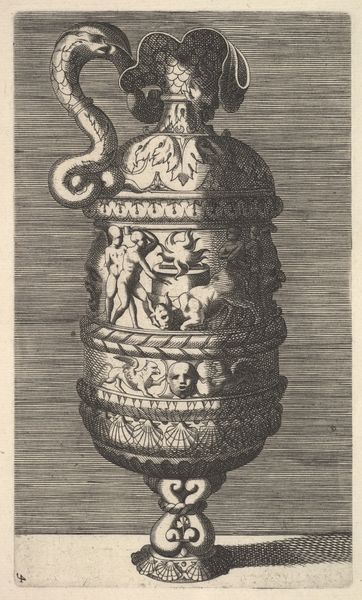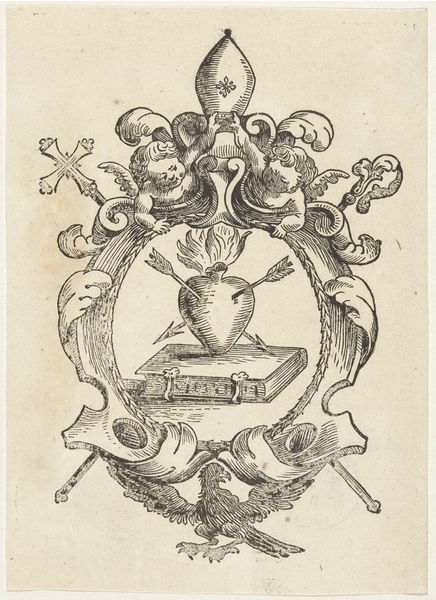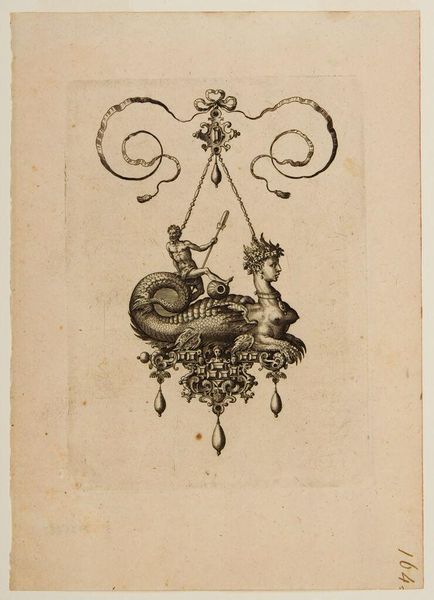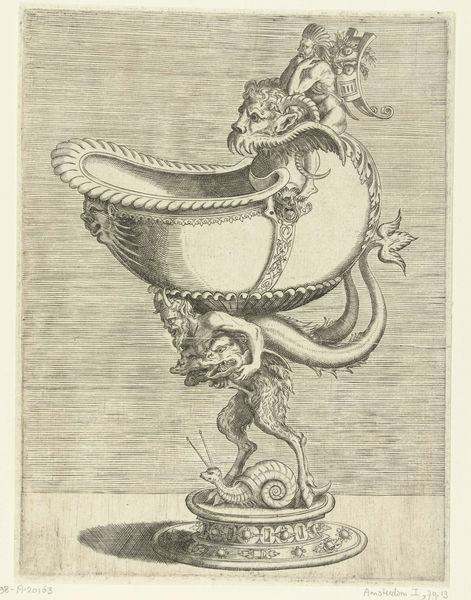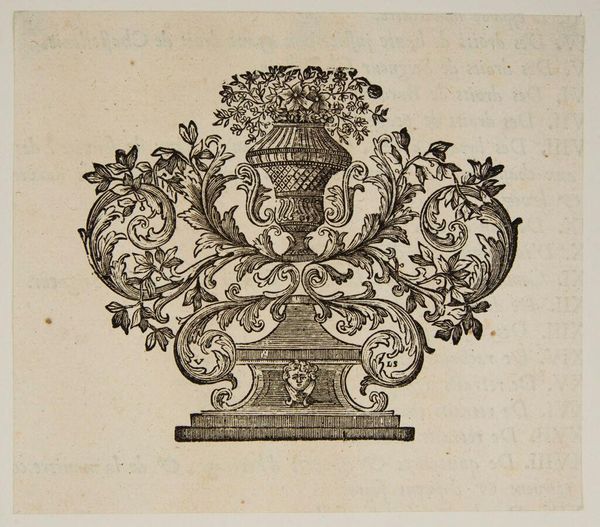
drawing, print, pencil
#
drawing
# print
#
pencil sketch
#
11_renaissance
#
pencil
Dimensions: 16 7/16 x 11 1/2 in. (41.7 x 29.2 cm)
Copyright: Public Domain
Editor: Here we have Erasmus Hornick's "Design for a Bucket," created sometime between 1496 and 1583. It's a drawing, likely a pencil sketch turned print. I find the level of detail astonishing for what is essentially a bucket design! It feels incredibly ornate, almost grotesque in its decoration. What historical currents might have influenced the making of this kind of art? Curator: That's a perceptive reaction. Consider the social function of art during the Renaissance. Objects like buckets weren't just utilitarian; they were also expressions of status and power, reflecting the wealth and taste of the patrons who commissioned them. This drawing probably circulated as part of pattern books from which patrons might choose designs for elaborate silver or gold vessels. The grotesque elements—the animalistic faces and spiraling shells—align with a broader fascination of the era with the classical past and a desire to overwhelm with ornamentation. Do you notice the precise rendering, as well as the drawing medium and how it shapes the art? Editor: Yes, the details in the shading really do add to the sense of weight and texture. It's easy to imagine this being rendered in silver. So, this wasn't necessarily about individual artistic expression as we might think of it today, but about serving a social need and contributing to a culture of display? Curator: Precisely. These kinds of designs were also used to facilitate knowledge and commerce; dissemination and aspiration could travel across vast cultural distances. And the print form, readily reproduced, amplified this role. So consider the role of artistic intention: What does this reveal about art and artistry more broadly? Editor: So interesting! I initially saw this as an oddity, but now I recognize that its extravagance speaks volumes about the society and function it served, while providing some knowledge of what was possible at the time. Curator: Exactly. It challenges us to rethink what we consider “art” and how its value shifts according to historical context. The pencil drawing for mass production has offered both of us important insights.
Comments
No comments
Be the first to comment and join the conversation on the ultimate creative platform.
